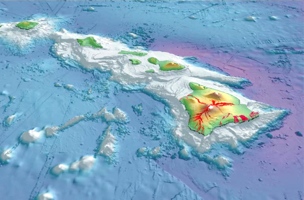Don’t bother making a hard copy.
I wrote some time ago about the cost of collecting paper notes and suggested that the contemporary data path that flows from the field to the geospatial deliverable should be as unencumbered by manual intervention as possible. The thrust of that blog was: The extra time and effort required to develop paper notes and drawings as well as the opportunity they afford for the accumulation of errors recommend their elimination. Still, hard copy records persist and will undoubtedly continue to be collected and utilized. The reasons are legion: organizational inertia, outmoded regulations, personal preference and sometimes just pure stubbornness.
Therefore I would like to offer a couple of additional reasons that paper notes, drawings and other hard copy records do more harm than good in geospatial work.
The moment data is collected it is out-of-date, if not obsolete. This is true of both digital and hard copy data. However, from that moment the character of the two categories diverges rather markedly. If digital records are centralized and access to them properly controlled, it is relatively easy to update them and serve up-to-date digital information to users. The same cannot be said of hard copy data. In fact, when hard copy data is stored in binders, filing cabinets, desk drawers and etc., as it most often is, it is virtually impossible to replace untimely data with up-to-date information in any reliable way. The resulting consequences are obvious. Out-of-date information inevitably yields bad decisions. The effects may be trivial or they may be dreadful. It is usually not possible to say which is more likely at the time the data is collected. In other words, a risk that is both certain and substantial can be eliminated right along with the elimination of hard copy records.
It is almost impossible to avoid contradictions between the hard copy and digital data. Today it is a rare project that is recorded exclusively with a paper, pencil, clipboard and tape measure, nearly all data collection involves electronic means. Most often, the paper notes and drawings that are made are done to fill the gaps in the digital records. These hard copy records are intended to augment aspects of the work that are not easily or efficiently accomplished by the electronic instruments. Eventually the hard copy data contradicts the digital data in some respect. How does the user decide which one is right? There is often no definitive discriminator available. A coin is flipped, either figuratively or literally, and a decision is made. This is another risk that almost certainly will appear, a risk that can be eliminated with the elimination of hard copy records.
Sometimes paper notes and drawings are actually derived from the electronically collected data. The goal is satisfaction of a regulatory or client requirement for a hard copy deliverable. The redundant time and effort may be unavoidable, but the consequences are identical with those mentioned above. The resulting hard copy deliverables are immediately out-of-date and difficult, or impossible, to update. Manual intervention in the production of the hard copy deliverable from the electronically collected data will eventually create a contradiction between the two. As new digital collections of the same data and updates are done the hard copy in the files of the client or the government agency remain static. Eventually the official truth of the hard copy records will contradict the actual conditions in the real world. Which one do you think will hold sway?






